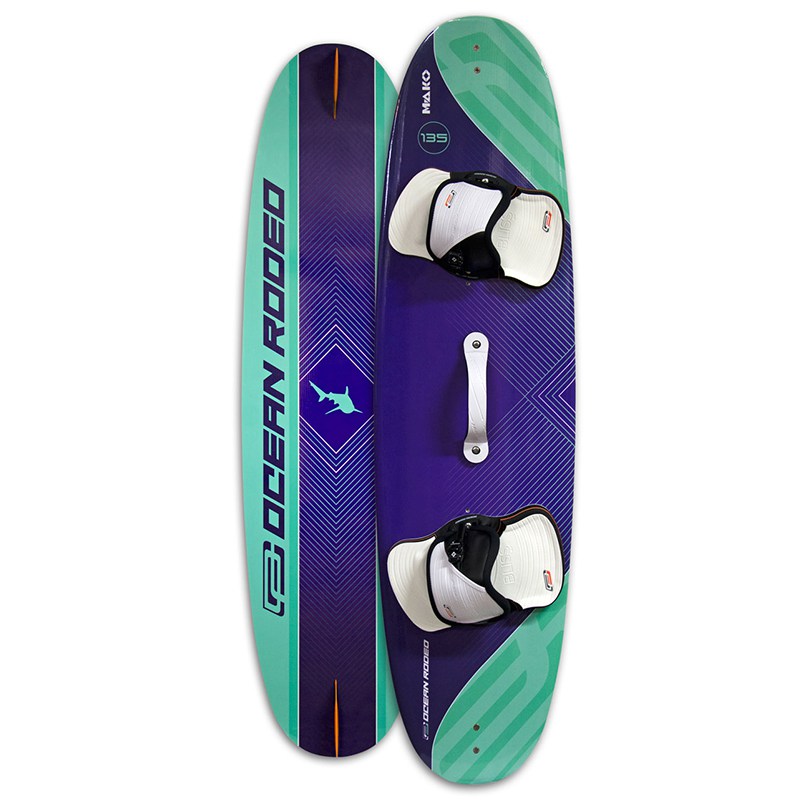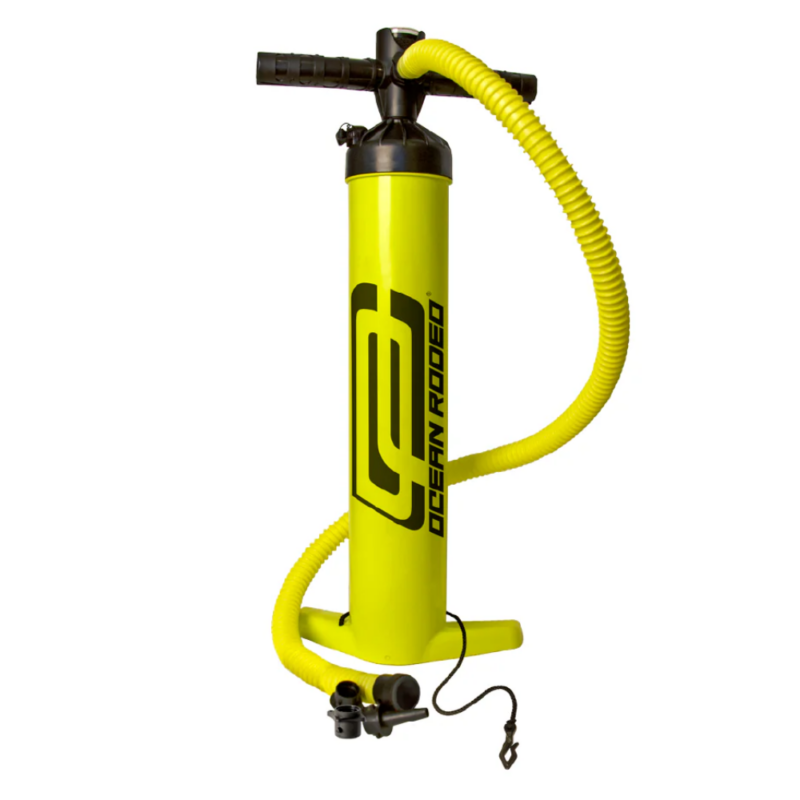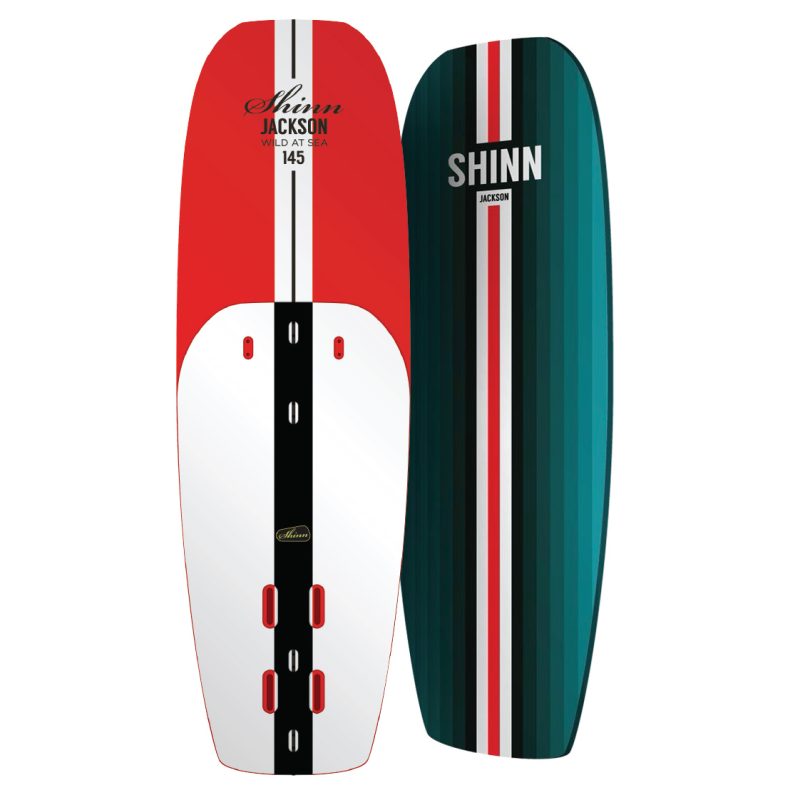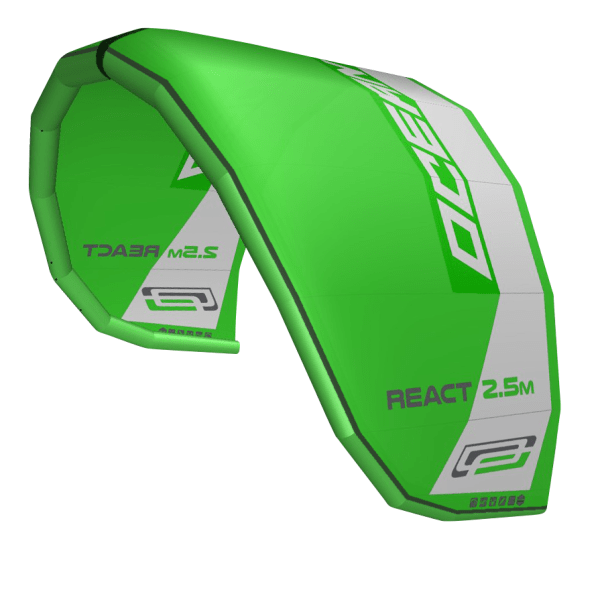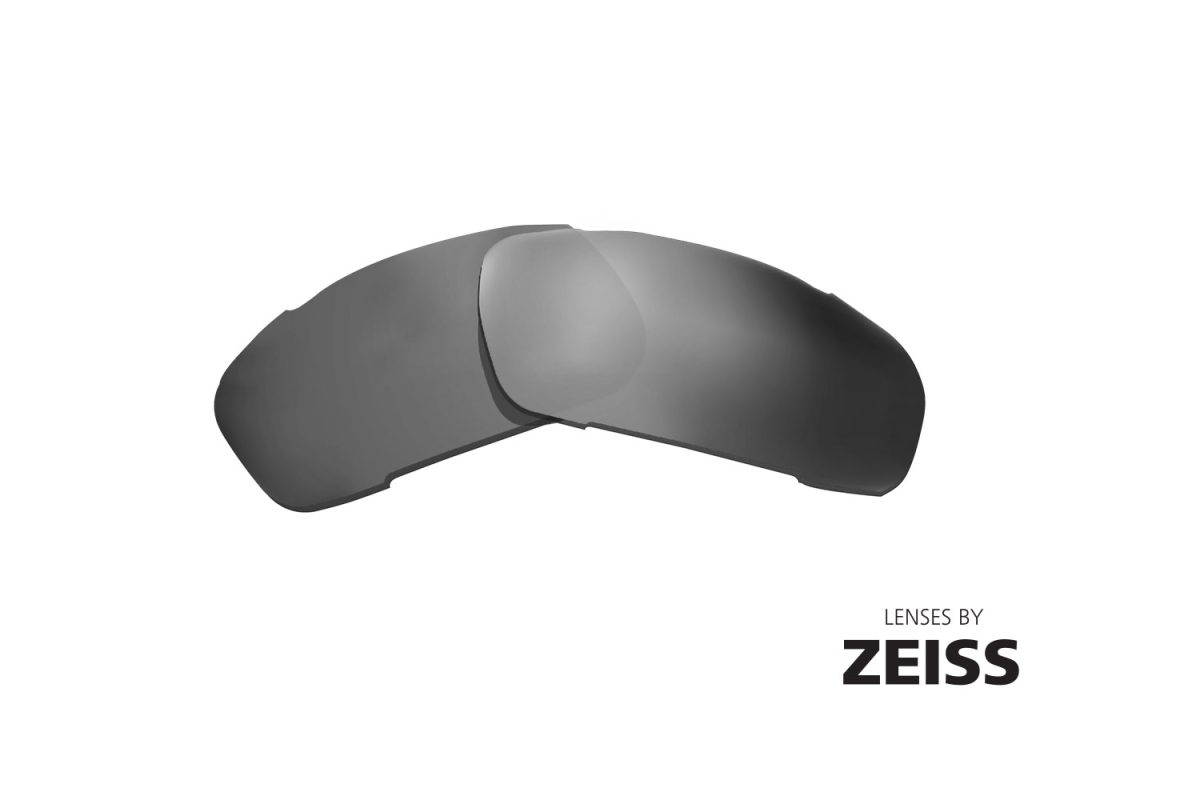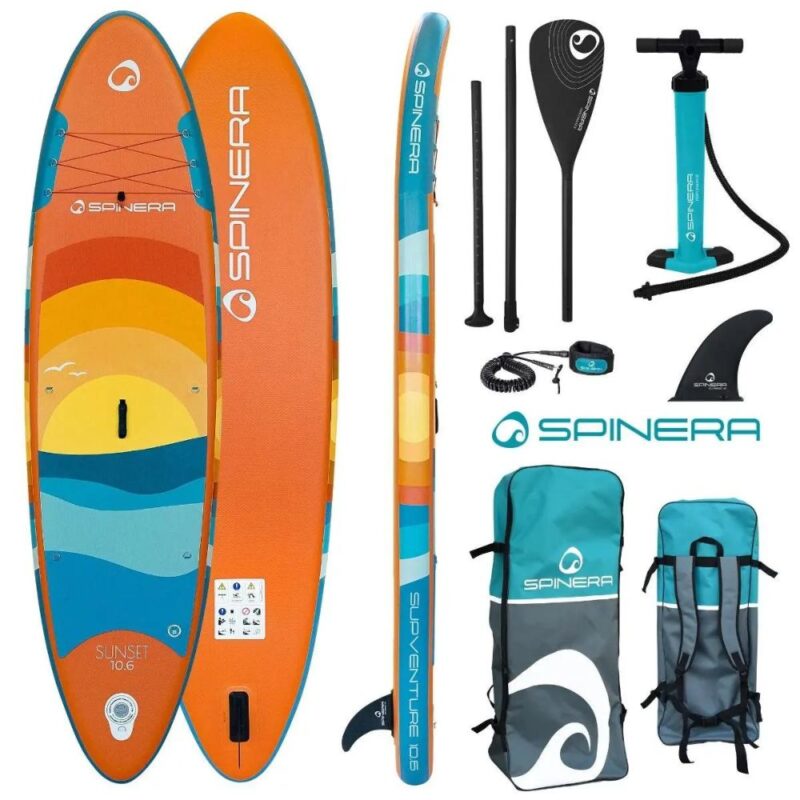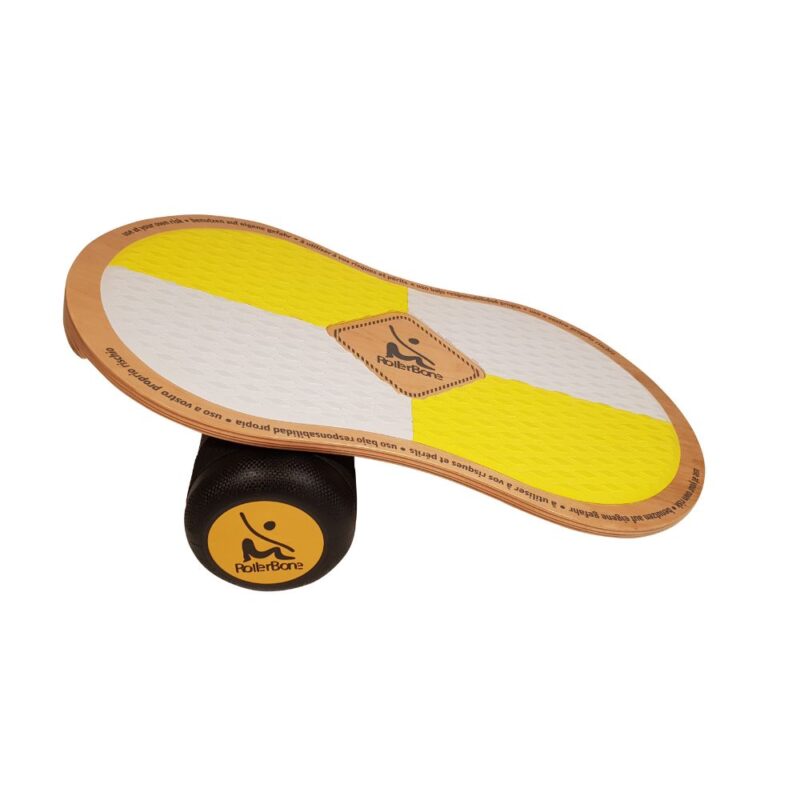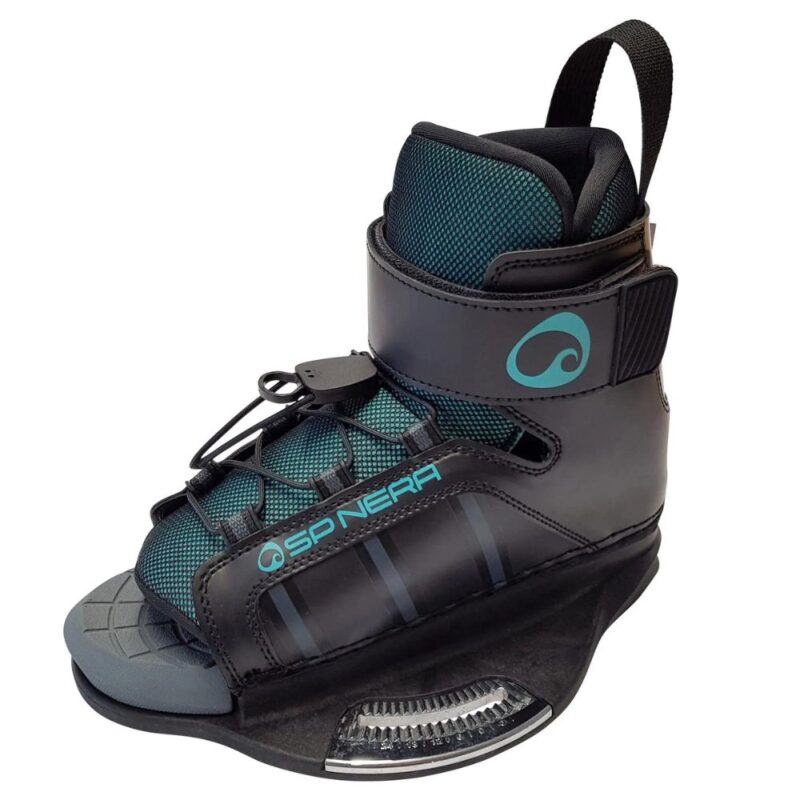
Blog
The Ultimate Guide to Kiteboarding: Everything You Need to Know
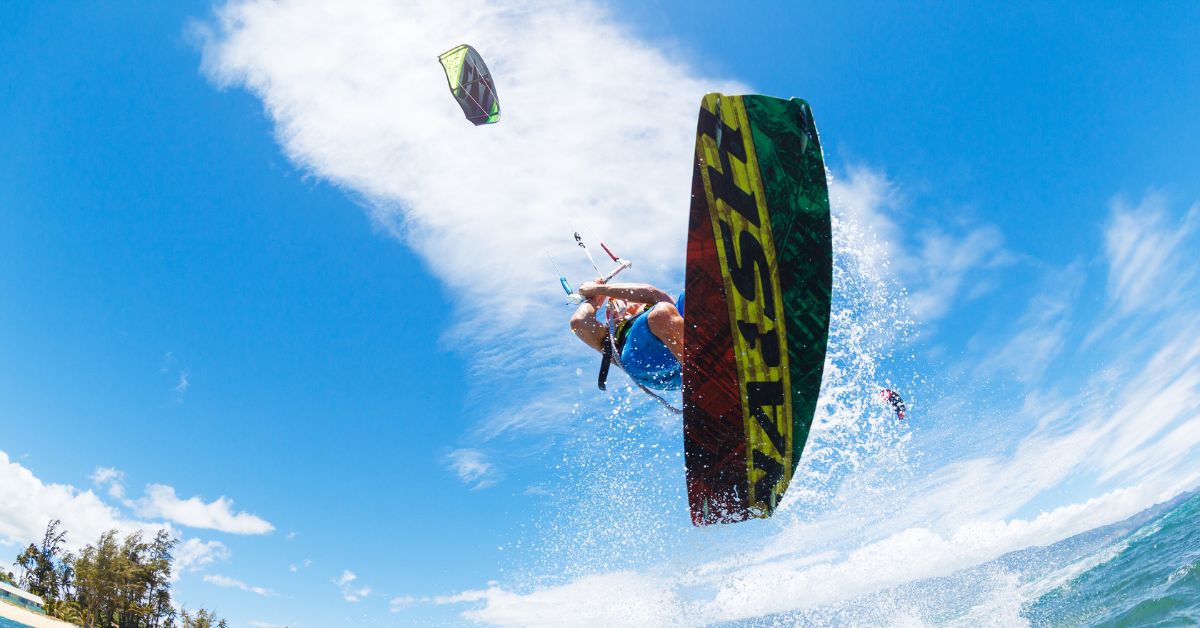
Whilst most people dread seeing a high-wind forecast, some get excited and grab their kiteboards and harnesses to prepare for the ultimate wind-water adventure: kiteboarding. Drawing in thrill seekers and sports enthusiasts from around the world, kiteboarding is a sport which combines surfing, wakeboarding and paragliding to glide across the waves and boldly jump in the air- experiencing the ultimate freedom of movement brought on by nature’s strongest forces. After learning all about the exciting realm of kiteboarding and acquiring top-quality gear from Ocean Trade Supplies, you will be hitting the water with skill and style in no time.
What is Kiteboarding?
Who says humans can’t fly? Kiteboarders use a large, wind-powered kite to propel themselves across bodies of water whilst standing on their boards, using the wind to carve, jump and soar above endless waves of water. Differing from traditional surfing where waiting for the right wave is imperative, kiteboarding awards you the full control- enabling you to ride in nearly any wind condition and exploring stretches of open water.
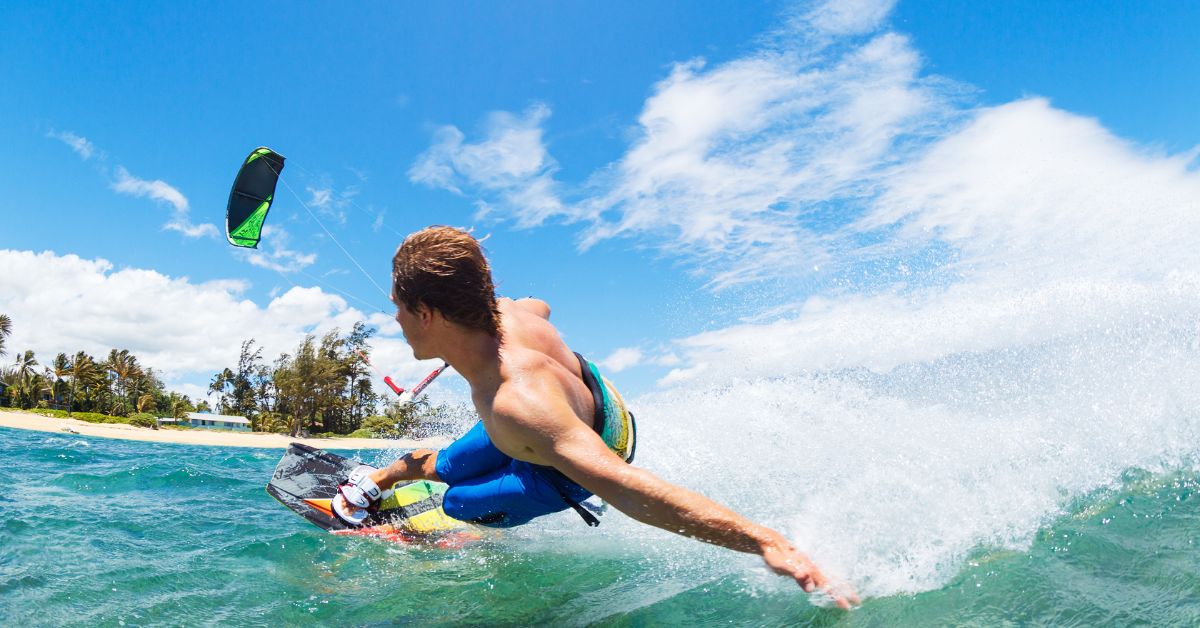
What Makes Kiteboarding Standout as a Sport?
Minimal Restrictions: unlike windsurfing which requires larger equipment, kiteboarding is famously lightweight, easy to transport and can be enjoyed across a span of locations- from tropical beaches to inland lakes.
Unmatched Versatility: kiteboarding is the king of adaptability- whether you’re after riding the perfect waves, exploring freestyle tricks, cruising across still waters or even hydro foiling in lighter wind, kiteboarding adapts to an array of different styles and conditions.
Convenient Cross-Training: want to improve your balance, coordination, strength and endurance? kiteboarding combines fitness across surfing, wakeboarding, and even paragliding, making it an impactful cross-training activity.
The Best Kiteboarding Equipment
No matter your kiteboarding expertise, having the right gear can be the make-or-break between a thrilling or frustrating experience on the water, so here’s an essential breakdown of the best kiteboarding equipment you’ll need to hit the waves with flying confidence.
Kites: The Wind’s Power in Your Hands
The kite you have is essentially the engine of the sport, so choosing the right one is crucial. With the right kite, the wind’s energy is captured perfectly and propels you forward right into the adventure.
Beginner Kites: Choose a stable and easy-to-control kite with a large surface area to catch more winds. Leading Edge Inflatable kites (LEI) are a popular choice for beginners because they’re easy to launch and relaunch as needed.
Advanced Kites: Once you’ve mastered kiteboarding to a comfortable level, you may prefer a kite that is more responsive and agile. Scope for kites which are designed for specific conditions: freestyle, wave riding or light wind. This way, your kite is designed just for your preference!
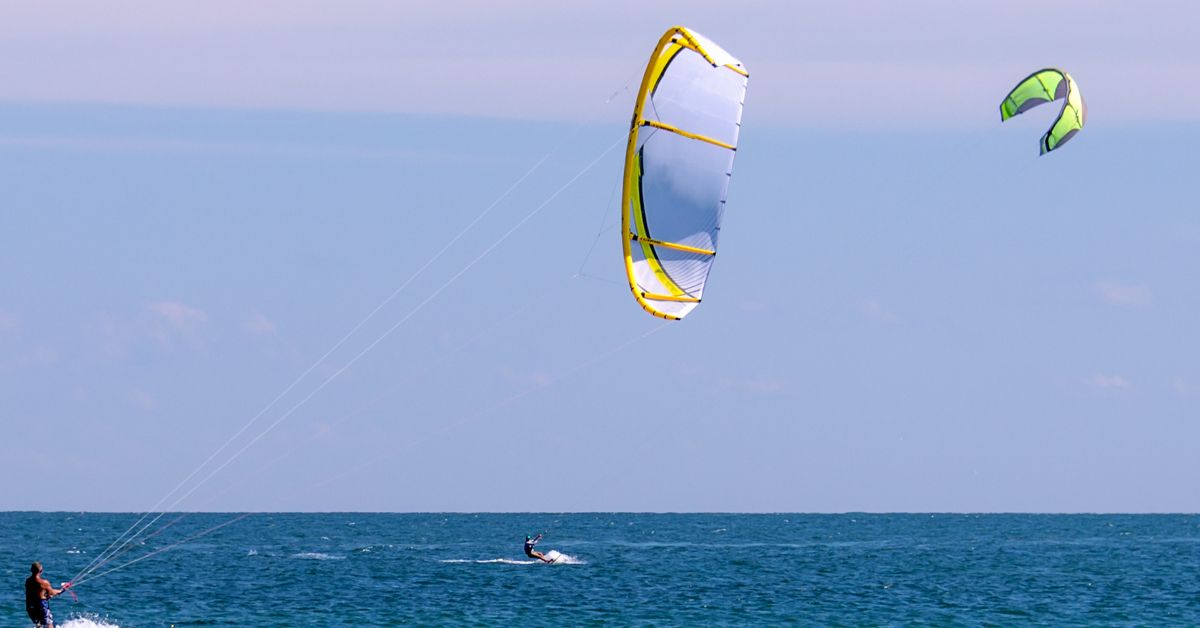
Boards: Catching Rides on the Water
The board is your key to gliding on the water like the pro you are. Picking the right shape and size depending on your skill level and riding style is an important step in your kiteboarding adventure.
Beginner Boards: Twin-tip boards are the most common for beginners as they’re easy to ride in both directions and offer stability which puts all riders at ease.
Advanced Boards: Directional boards are the best suited for wave riding and hydrofoil boards allow you to glide above the water’s surface for a smoother and more advanced cruise.
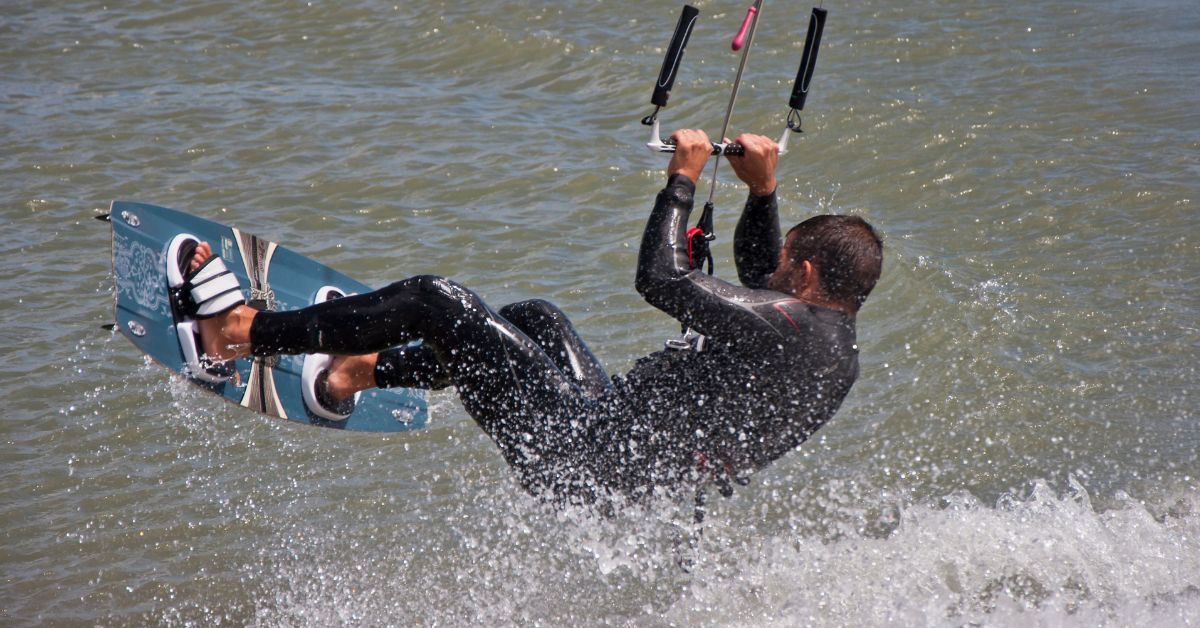
Harnesses: Your Connection to Wind
A harness is your crucial link to the kite allowing you to transfer the kite’s pull from your arms to your body and glide safely onwards.
Beginner Harnesses: a waist harness is a comfortable option for most beginners and provides the good support needed whilst learning.
Advanced Harness: a seat harness offers a lower point of attachment and gives more freedom of movement for advanced riders performing aerial tricks- time to fly like a boss!
Wetsuits: Suit Up, Stay Warm
A wetsuit is highly recommended for comfort and safety, especially in colder waters. It keeps you warm, provides buoyancy, and helps prevent unwanted abrasions.
The Right Wetsuit: Go for a thicker wetsuit (4/3mm or 5/4mm) if you’re in colder waters, or a thinner one (3/2mm) for warmer conditions. Once you’ve got the hang of things, go for a wetsuit that allows for flexibility in performing tricks.
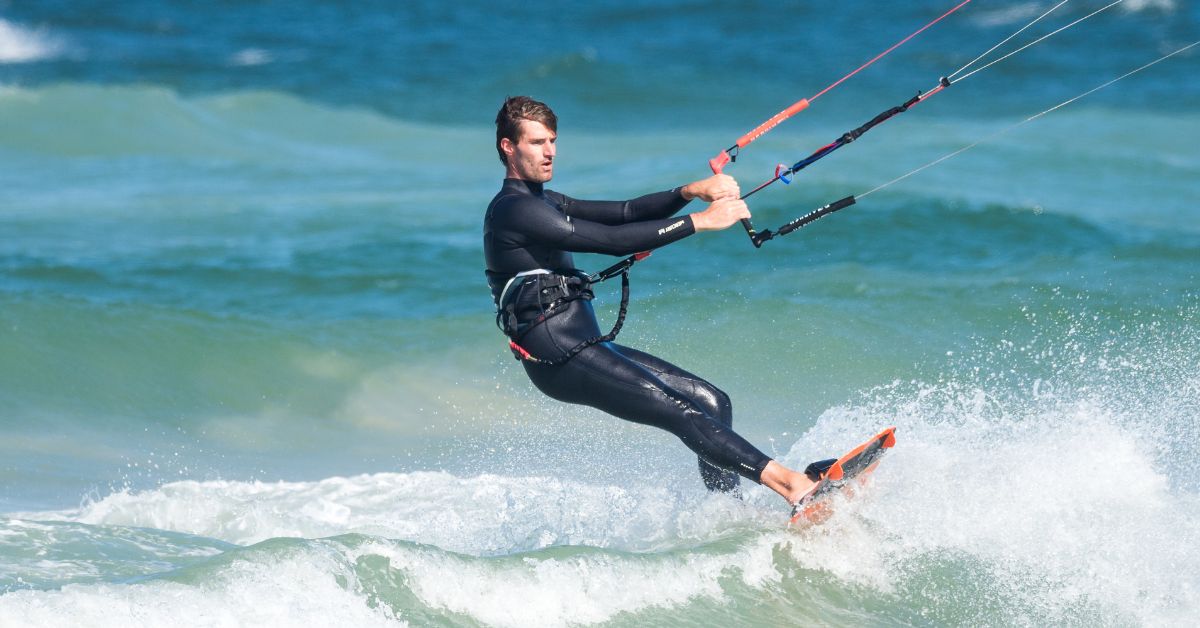
Safety Gear: Protect Yourself
Fun can only be had with the ultimate priority taken care of: safety. So, pay good attention to picking your kiteboarding safety gear.
Helmet: protects the most important thing: your head, during impacts.
Impact Vest: cushions your fall and provides additional flotation for added security.
Safety Leash: keeps you attached to your kite.
The Ultimate Spots for Kiteboarding in Cape Town
Cape Town isn’t just a beautiful coastal city- it’s a kiteboarding Mecca. With Cape Town’s notoriously consistent winds, varied conditions, jaw-dropping scenic backdrops and thriving kiteboarding community, it is the ultimate destination for exploring this sport. Kiteboarding in Cape Town provides the adventure of a lifetime but which spots should you choose?
For Beginners: Smooth Waters and Steady Winds
Dolphin Beach, Bloubergstrand: provides steady winds and shallow waters- ideal for beginners learning to control their kites.
Langebaan: a short drive from Cape Town offers a flat-water lagoon with warm, shallow waters and lighter winds which make for a beginner’s paradise.
Big Bay: an all-rounder spot with gentle waves, sandy beaches and relaxed vibes for beginner and intermediate kiteboarders to enjoy.
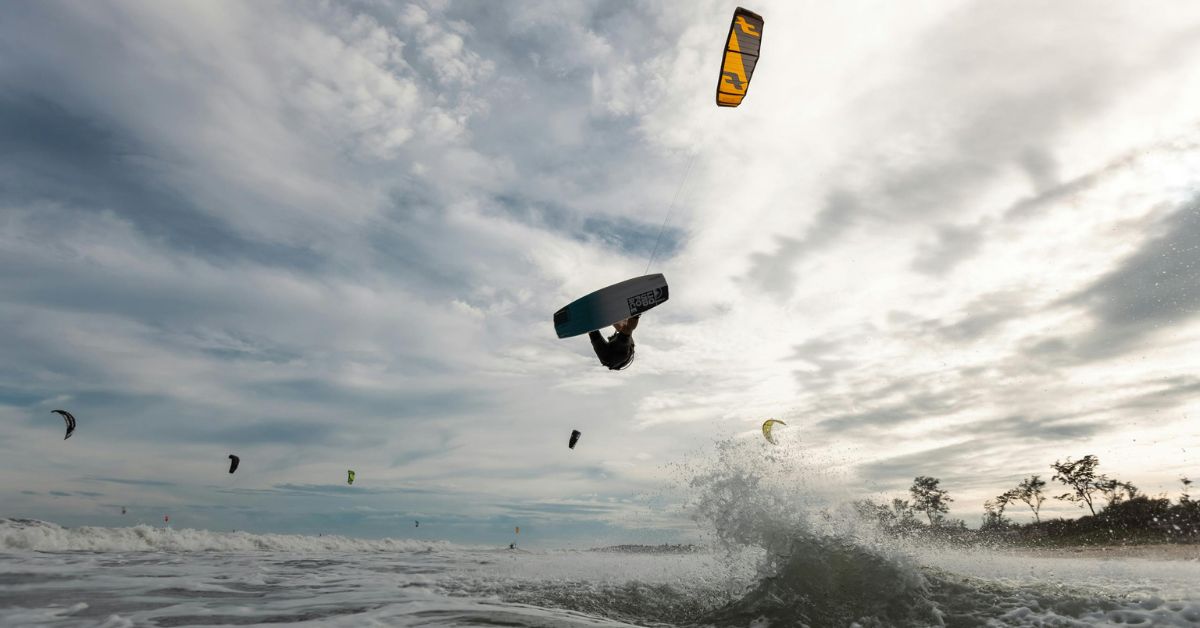
For Advanced Riders: Strong Winds, Big Air
Kite Beach, Bloubergstrand: Cape Town’s holy grail of kiteboarding, known for its strong winds, huge waves and the high jumps they provide.
Sunset Beach: a high-wind, high-energy spot that’s best suited for experienced riders looking for adrenaline filled challenges.
Witsand, West Coast: a wave-riding heaven with powerful swells and long downwind stretches.
Weather Conditions and The Best Time to Visit.
Peak Kiteboarding Season: November – March
Winds: The famous Cape Doctor wind picks up in the afternoon and often exceeds 20-30 knots- offering ideal gusts for big air and powered sessions.
Water Temperature: Ranges from 12°C – 18°C, so a 3/2mm or 4/3mm wetsuit is recommended
Weather: Sunny with mild temperatures, making it a dream destination for water sports lovers.

How To Get Started: Kiteboarding Lessons and Tips
Before you make the wind your playground and the ocean your dance floor, proper training is required. Learning from a certified instructor will help fast-track your progress, keep you safe, and guide you in mastering kiteboarding with confidence.
What to Expect from Your First Kiteboarding Lessons
Your first few lessons will be all about familiarising yourself with the basics before you hit the water. Here’s some things you can look forward to learning:
- Kite Control & Safety: learning how to launch, steer and control the power of your wind-fuelled kite.
- Body Dragging: practise how to utilise the kite to move through the water without a board.
- Water Starts: Getting up on that board and learning the fundamental balancing techniques.
- Wind and Weather Basics: Understanding weather conditions, wind directions and how to asses the perfect safe riding spot for you to have your fun.
- Self-Rescue Techniques: learning how to handle emergencies like a pro.
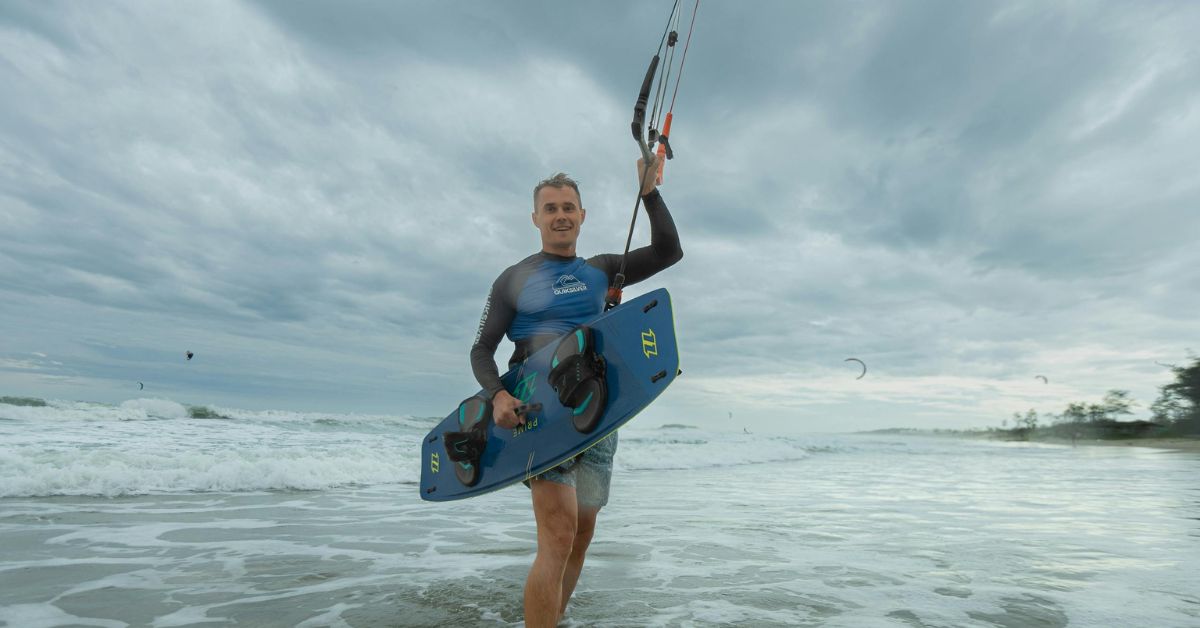
Safety Tips Before Hitting the Water
Checking Wind and Weather: make sure conditions are suitable for your skill-level. Avoid those strong gusts if you’re still a beginner.
Gear Up: Using the right kiteboarding gear such as a helmet, impact vest, and wetsuit for your ultimate protection.
Scouting Beginner-Friendly Spots: Choosing those flat water locations with steady winds and no obstacles, perfect for you to get the hang of things without having to stress.
Knowing Safety Systems: Make sure you know how to quick-release your kite incase of unexpected emergencies.
Pick a Buddy: You shouldn’t be doing this alone- luckily, the kiteboarding community is teeming with buddies to take along with you on your adventure. Alternatively, be near a lifeguard for better safety.
Where to Buy the Best Kiteboarding Equipment
Having the right gear is just as important as mastering the skills. Investing in quality equipment ensures better performance, improved safety and guarantees that your kiteboarding journey goes as smoothly as possible.
Options for Purchasing Your kiteboarding gear and equipment
Specialist Kiteboarding Stores: Scout for specific kiteboarding gear shops that offer important things like guidance, warranties and after-sales support.
Online Kiteboarding Retailers: Online kiteboarding equipment stores provide a convenient wide range of gear that’s easy to order and purchase online.
Second-Hand Marketplaces: Pre-owned gear can be good for a budget but always inspect for wear and tear to ensure your safety.
Ocean Trade Supplies: Your go-to kiteboarding gear provider which offers convenient, high-quality, specialised shopping for the ultimate kiteboarding equipment shopping experience.
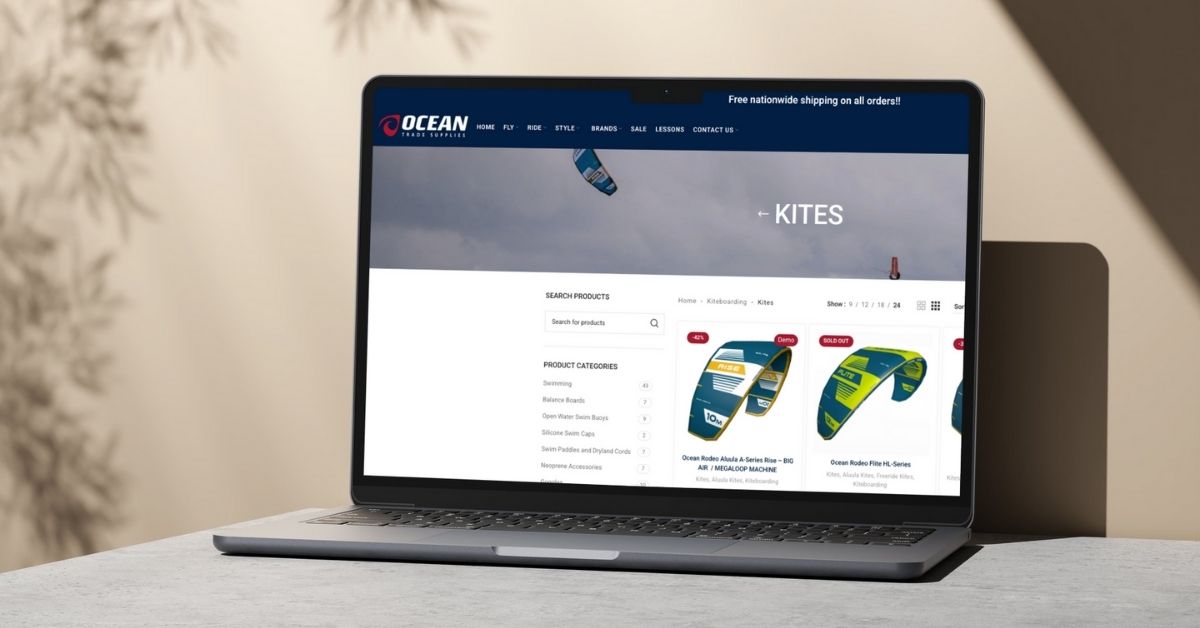
Ocean Trade Supplies: Your Kiteboarding Guru
Ocean Trade Supplies is the perfect place to start and expand your kiteboarding journey. The store provides only premium, tested gear from the top kiteboarding brands whilst also offering a wide variety of gear from beginner kites to those high-performance freestyle setups- ensuring quality for every step of the journey. The knowledgeable team also helps you choose the perfect equipment tailored to your skillset and riding style. All of this can be ordered online from the comfort of your home, with your new kiteboarding gear delivered hassle-free.
Kiteboarding FAQs
Got more questions about kiteboarding? Don’t sweat it! These are some commonly asked questions and answers that curious riders ask.
How much does it cost to start kiteboarding?
Kiteboarding lessons giving you a 6-12 hour beginner course should cost you around R3,500 – R7000.
Kiteboarding gear (kite, board, harness and wetsuit) should cost you R20 000 – R50 000 for a new setup.
Whilst the investment seems a little steep, quality gear lasts for years and can offer you endless wave and wind adventures.
What’s the best beginner-friendly kiteboarding gear?
Kite: a stable, depower-friendly kite like the Duotone Evo, Cabrinha Switchblade, or Naish Pivot.
Board: a larger twin-tip board (135-150 cm) for better stability.
Harness: a seat harness for extra support and comfort.
Safety Gear: a helmet, impact vest, and wetsuit for protection.
For the best beginner-friendly kiteboarding gear, check out Ocean Trade Supplies!
Where can I take kiteboarding lessons in Cape Town?
Is it time to start practising? Cape Town, our kiteboarding Mecca, offers various options for beginner lessons at top kiteboarding spots. Here are some trusted schools:
High Five Kitesurf School, Blouberg
What are the best brands for kiteboarding equipment?
Duotone, Cabrinha, Naish and Core Kites are trusted brands that you can start exploring to find out what suits you best.
How do I choose the right size kiteboarding kite?
General rules for picking the right kite deadening on your size, skill and wind conditions are:
Lighter riders (50-70kg): 7m – 10m kites
Average riders (70-85kg): 9m – 12m kites
Heavier riders (85kg+): 12m – 14m kites
Stronger winds (25+ knots): Smaller kites (5m – 9m)
Lighter winds (12-18 knots): Larger kites (12m – 17m)
Start your adventure and shop the best kiteboarding kites and equipment now at Ocean Trade Supplies!

